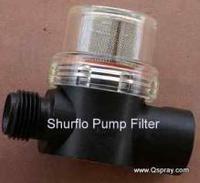Preventive Maintenance Is Not An Option
Posted by Andrew Greess on May 20, 2015
Harsh chemicals, extreme temperatures, long operating hours and less-then-gentle handling by technicians, age and wear eventually will take their toll on equipment. A good preventive maintenance (PM) program will reduce equipment expenses and employee downtime. General guidelines:
- Consult equipment owner’s manuals, or contact your equipment provider for proper operating conditions and maintenance schedules. A lack of proper maintenance might void manufacturer’s warranties.
- Train your staff about the proper use of equipment. Our repair shop finds technicians tend to run motors and pumps too fast and at too high an operating pressure to get done quickly. This will reduce equipment life.
- Technicians don’t check equipment before starting it up, so instruct your technicians to check line strainers (filters), belts and hoses before starting equipment. Teach them to identify problems before they occur.
- Train your technicians to report problems instead of just ignoring them. If the pump sounds like it has a problem, it probably does. It’s cheaper to find and fix problems early.
- Track damage, repairs and problems by truck, technician and part to identify problems and training opportunities.
- Instruct your equipment provider to install the equipment so it’s easily accessible for maintenance and repairs. If equipment isn’t easy to service, it’s less likely to be serviced.
Create a preventive maintenance program based on your equipment, technicians, use and organization’s operating philosophy. If maintaining productivity and avoiding cancelled stops are top priorities, your program might call for replacing certain components at specified intervals, rather than replacing worn or failed parts. To ensure you don’t miss anything, take a structured approach to developing your PM program. The suggestions below follow the flow of water from tank through filter, pump, hose and gun. Here are some highlights to get you started.

Tank. Clean your tank periodically to prevent chemical buildup and debris, which will clog lines and starve the pump. Most pumps will sustain significant damage if run dry for more than a brief time. Line strainer. Check and clean your line strainer (filter) to ensure no debris gets to your pump. When you can no longer rinse the filter, replace it. Replace the filter O-ring periodically before it swells and no longer creates an airtight seal.
Pump. Service the pump according to manufacturer specifications. Your equipment provider stocks pump repair kits. Service your pump just before or just after your busy season to be sure the pump is ready for next season. If you wait for your pump to fail before servicing it, you can expect longer downtime and more costly repairs.
Engine. Service the engine according to manufacturer specifications. Like the engine in your personal vehicle, changing engine oil is the best thing you can do to extend engine life. Periodic tune-ups can keep your engine running and your technicians productive. Inspect and replace the pull cord before it breaks. Inspect belts for wear.
Hose reel. Service the hose reel swivel periodically to prevent leaks. Check the reel tensioner and locking pin for wear.
Spray gun. Spray guns can be rebuilt with repair kits available from your equipment provider. Servicing the spray gun will help reduce chemical spills and technician chemical exposure.
Check hoses. Check the spray hose and all supply hoses for excessive wear and damage. Check clamps and connections to ensure good fit and an airtight seal. Be sure to check any O-rings, gaskets, washers, etc. Failure to do so can result in large spills, especially if the technician is at the far end of 200 feet of hose when the leak happens.
Worn tips cost you money. Equipment experts report *** the brass spray tip on a one gallon compressed air sprayer experiences 10-percent nozzle wear each year. This means after one year, your sprayer is putting out 10 percent more chemical than it did the year before.
What does this mean to the typical company? Each year you use sprayer, your chemical costs increase 10 percent. The nozzle wears out at 10 percent per year, so the situation worsens over time. Unless you can train your technician to walk 10 percent faster each year, your profitability will decline. It’s cheaper to replace your tip every year than to buy 10 percent more chemical.
Also, clean your tip with a soft bristle brush. It’s OK to use a toothpick if needed. Using metal, such as knife or pin, will damage the tip and spray pattern. Clean tips periodically with a mild detergent. Inspect and replace gaskets and O-rings as needed.
When you need professional spray equipment, parts and supplies, pest control and landscape companies, look to Qspray.com for everything you need to be your trusted resource.
(***) Source: Application of Pesticides in Professional Pest Control, By Cecil Paterson and William Robinson, B&G Equipment Company, Spraying Systems Company.

